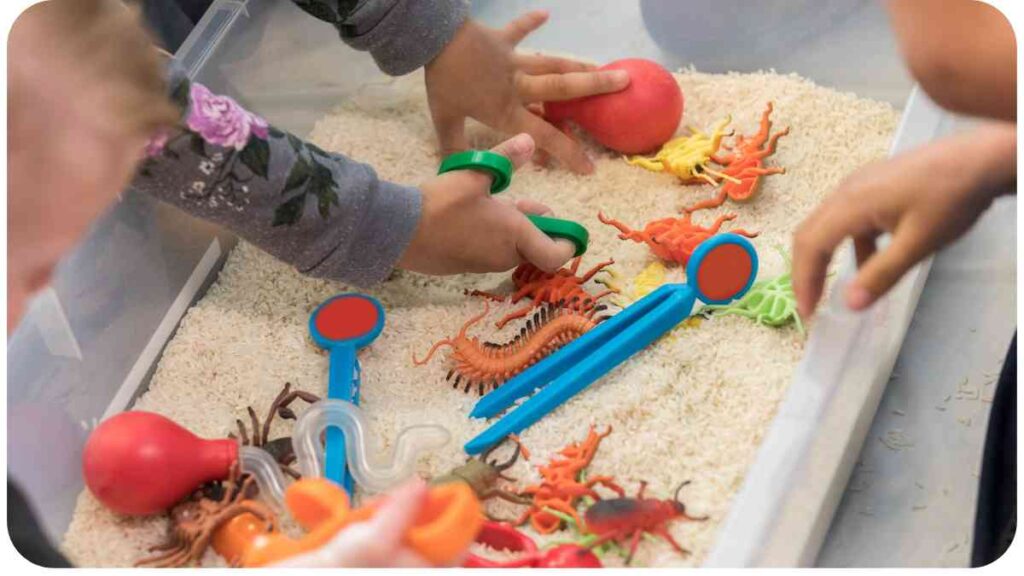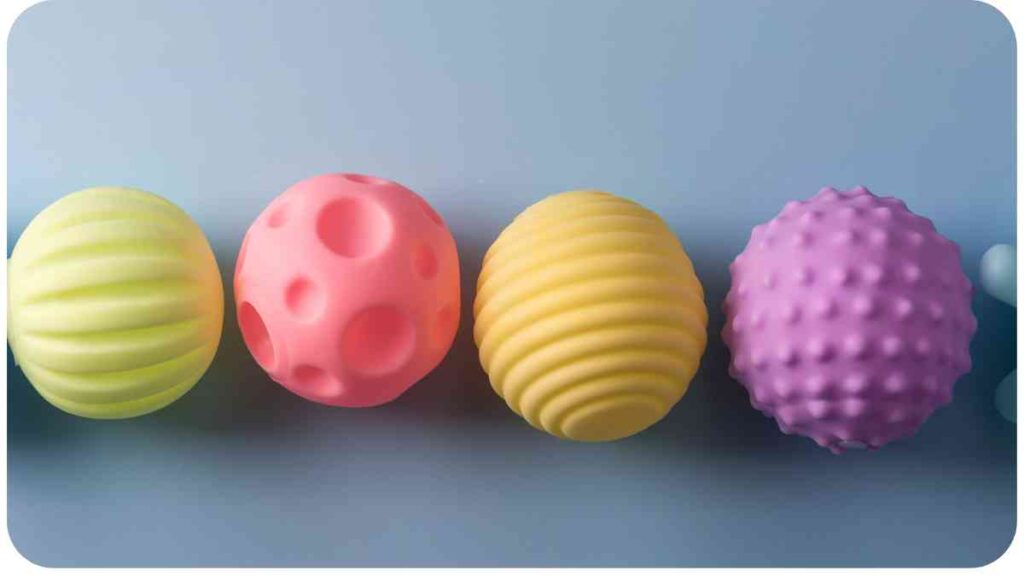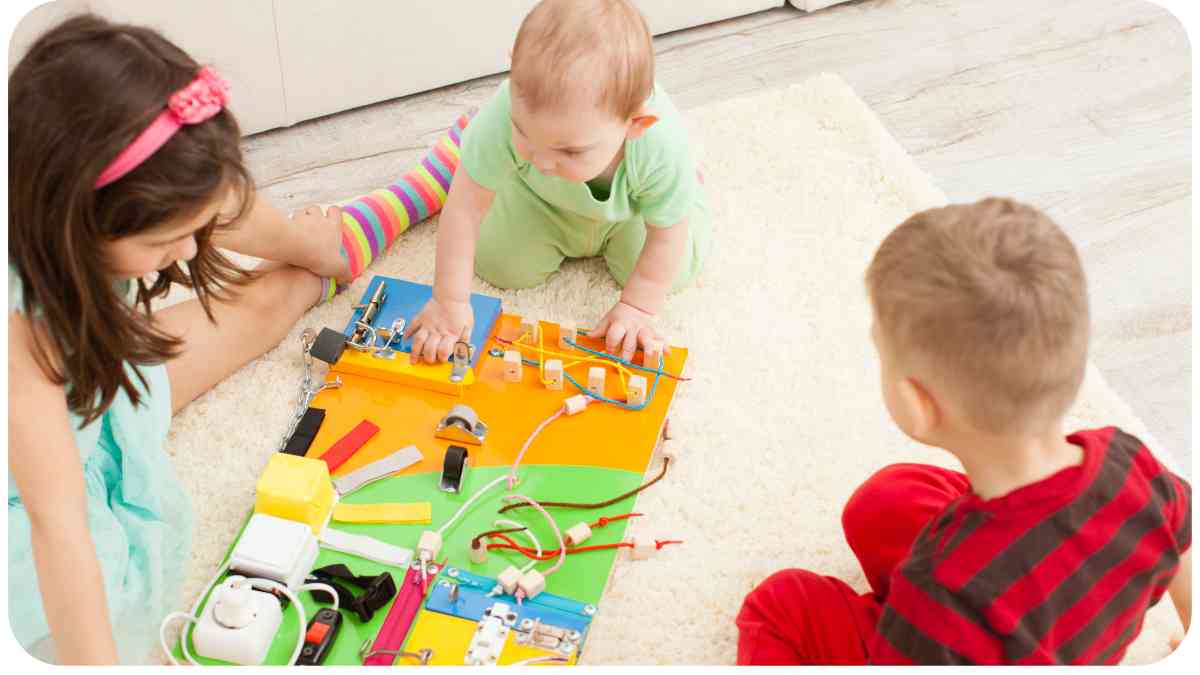Welcome to this comprehensive guide on creating sensory bottles! Sensory bottles, also known as discovery bottles or calm-down bottles, are excellent tools for stimulating and engaging individuals of all ages.
These simple yet effective DIY projects provide visual, auditory, and tactile input, benefiting both children and adults with sensory needs or seeking stress relief. In this step-by-step guide, we will explore everything you need to know to make your own sensory bottles and unlock their potential.
| Takeaway |
|---|
| Sensory bottles are versatile tools that provide sensory stimulation, relaxation, and learning opportunities. |
| Creating sensory bottles can be a fun and engaging DIY project for all ages. |
| Clear plastic bottles with secure lids are ideal for making sensory bottles. |
| The choice of sensory items and liquid fillers allows for customization and personalization. |
| Proper sealing of the bottles is crucial to prevent spills and ensure safety. |
| Sensory bottles can be used for sensory play, calming, learning, and distraction techniques. |
| Regular supervision and adherence to safety guidelines are important when using sensory bottles. |
| Sensory bottles offer numerous benefits, including sensory exploration, fine motor skills development, and relaxation. |
Materials Needed
Before diving into the creation process, let’s gather the necessary materials:
- Clear plastic bottles with lids
- Sensory items such as glitter, beads, buttons, feathers, or sequins
- Water or clear liquid filler
- Additional materials for personalization and decoration (optional)
- Glue gun or super glue (if necessary)
- Funnel or measuring cup (optional)
- Table: Materials Needed for Sensory Bottles DIY
Explore a world of tactile wonders with sensory toys that captivate young minds. From textures to sounds, these toys enrich toddlers’ sensory experiences, fostering holistic development through play.
| Materials |
| Clear plastic bottles |
| Sensory items |
| Water or clear liquid filler |
| Additional decoration items |
| Glue gun or super glue |
| Funnel or measuring cup |
Step 1: Choosing the Right Bottles
The first step in creating sensory bottles is selecting the appropriate containers. Clear plastic bottles with secure lids are the ideal choice as they allow for optimal visibility and durability. Consider using plastic bottles with a tight-fit or screw-on lids to prevent leaks and spills. Ensure that the bottles are free of any residue or impurities that may interfere with the visual appeal of the sensory items placed inside.
Step 2: Selecting Sensory Items

Now that you have your bottles ready, it’s time to choose the sensory items that will captivate and stimulate the senses. Various small objects can be used, like glitter, beads, buttons, feathers, or sequins. When selecting these items, consider their visual appeal, color combinations, and the sound they produce when moving within the bottle.
Unleash creativity with engaging DIY sensory toy ideas. Crafting homemade sensory toys not only saves costs but also allows for personalized experiences tailored to individual preferences, creating meaningful connections in playtime.
Creating a table can make it easier to understand the different sensory items and their benefits.
| Sensory Item | Benefit |
| Glitter | Captivating visual effect and promotes focus and attention |
| Beads | Provides auditory feedback and enhances fine motor skills |
| Buttons | Offers texture and helps strengthen finger dexterity |
| Feathers | Offers tactile stimulation and encourages sensory exploration |
| Sequins | Creates visual fascination and encourages eye tracking skills |
Step 3: Filling the Bottles
Once you have gathered your sensory items, it’s time to fill the bottles. You can use water or any clear liquid filler of your choice. The amount of liquid you use will depend on the size of the bottle and the desired sensory effect. It’s recommended to fill the bottles about three-quarters full to allow space for the items to move and create interesting visual effects.
Consider using a funnel or a measuring cup to pour the liquid into the bottles, ensuring accuracy and minimizing spills. Take care not to overfill the bottles, as it can hinder the movement of the sensory items.
To enhance the clarity and visual appeal of the sensory bottles, you can also consider using distilled water or a clear liquid with a similar water-like consistency.
Step 4: Sealing the Bottles
To prevent any accidental spills or leaks, it’s important to seal the bottles securely. Ensure the lids are tightly closed, or if needed, use a hot glue gun or super glue to seal them shut. This step is crucial, especially if you plan to use sensory bottles with younger children who may be more prone to exploration and curiosity.
By sealing the bottles properly, you can create a safe and long-lasting sensory experience without the worry of spills or choking hazards.
Embrace budget-friendly sensory play with easy DIY solutions. Discover how common household items transform into sensory treasures, providing enriching experiences for children without breaking the bank.
Step 5: Enhancing the Sensory Experience

To take your sensory bottles to the next level, you can explore additional enhancements. Consider adding more layers of visual interest by incorporating different colored liquids or creating a theme-based bottle. For example, you could make a “galaxy” sensory bottle with a combination of glitter, beads, and dark-colored liquid.
Additionally, you can experiment with varying densities by adding different amounts of sensory items or liquid fillers, creating mesmerizing effects as the items float and sink. The possibilities are endless, and these enhancements can make the sensory experience even more captivating.
Let’s take a look at a table that outlines some additional enhancements and options for your sensory bottles:
| Enhancement | Description |
| Colored Liquids | Add different colored liquids to create vibrant and visually appealing effects |
| Theme-Based Bottles | Create sensory bottles based on a specific theme or concept |
| Varying Densities | Experiment with different amounts of sensory items or liquid fillers |
| Glow-in-the-Dark | Use glow-in-the-dark sensory items or incorporate UV-reactive materials |
Step 6: Personalization and Decoration
Now that your sensory bottles are filled and enhanced, it’s time to add a personal touch and make them visually appealing. You can customize the bottles with various decorations and materials. Here are some ideas to consider:
Delve into the nuances of sensory blocks and their impact on child development. This insightful comparison explores how sensory elements enhance traditional block play, fostering cognitive growth and sensory awareness.
- Ribbons and bows: Attach colorful ribbons or bows around the neck of the bottle for an added aesthetic appeal.
- Labels: Create labels for each sensory bottle, describing the theme or purpose. This can help organize and differentiate bottles with varying sensory experiences.
- Stickers: Decorate the bottles with stickers that resonate with the chosen theme or appeal to personal preferences.
- Paint: Consider painting the bottle caps or the surface of the bottle with non-toxic acrylic paint for a unique and artistic touch.
- Table: Decoration Ideas and Materials
| Decoration Ideas |
| Ribbons and bows |
| Labels |
| Stickers |
| Paint |
Feel free to use your creativity and incorporate any additional materials that suit your style and preferences. Remember, personalization and decoration can make the sensory bottles even more appealing and engaging.
Step 7: Utilizing Sensory Bottles
Once your sensory bottles are complete, you can start utilizing them in various ways. Here are some suggestions:
- Sensory Play: Sensory bottles are great tools for sensory play sessions. Children and adults can manipulate the bottles, observing the movement of the sensory items and experiencing different sensations.
- Calming Tool: Sensory bottles can be used as calming tools during times of stress or anxiety. The mesmerizing effects of the sensory items floating and swirling inside the bottles can help soothe and relax the mind.
- Learning Tool: Sensory bottles can also be educational. They can be used to teach colors, shapes, and even cause and effect relationships. Encourage children to describe what they see and explain why certain sensory items behave in specific ways.
- Distraction Technique: Sensory bottles can serve as distraction tools in various settings. Whether it’s during a doctor’s visit, a long car ride, or a challenging moment, the sensory bottles can capture attention and divert focus to a calming visual experience.
Safety Tips
- Always supervise children while using sensory bottles to ensure their safety and prevent any potential hazards.
- Use child-safe materials and avoid small objects that can pose a choking risk for younger children.
- Ensure the bottles are well-sealed to prevent leaks or spills.
- Regularly inspect the bottles for any damage or wear and tear, and replace as necessary.
Benefits of Sensory Bottles
Gain valuable insights into the impact of sensory toys on speech development. This analysis examines how sensory-rich experiences contribute to language skills, offering a holistic approach to nurturing communication abilities in children.
Creating and using sensory bottles can offer numerous benefits for individuals of all ages. Some of these benefits include:
- Sensory stimulation and exploration
- Development of fine motor skills
- Encouragement of focus and attention
- Relaxation and stress relief
- Learning opportunities
- Visual and tactile sensory integration
Conclusion
In conclusion, sensory bottles are versatile and engaging tools that provide sensory stimulation, relaxation, and learning opportunities. By following this step-by-step guide, you can create personalized sensory bottles that cater to your specific needs and preferences.
Enjoy the process of creating these captivating sensory experiences and witness the benefits they bring to both children and adults alike. Start your sensory bottle DIY journey today and unlock the endless possibilities they offer!
Further Reading
Here are some additional resources to further explore the topic of sensory bottles:
- Understood: How to Make a Sensory Bottle
- A comprehensive guide providing step-by-step instructions on creating sensory bottles. Learn about different sensory bottle variations and gain valuable insights into their benefits.
- Teaching Littles: How to Make Simple DIY Glitter Sensory Bottles
- Discover a simple yet effective approach to creating glitter sensory bottles. This article shares easy-to-follow instructions and helpful tips for making visually captivating sensory bottles.
- Especially Education: DIY Sensory Bottles
- Dive into this blog post that provides creative ideas and inspiration for making sensory bottles. Find suggestions for sensory items, filling options, and personalization techniques.
FAQs
Here are some commonly asked questions about sensory bottles:
Are sensory bottles suitable for all age groups?
Sensory bottles can be enjoyed by individuals of all ages. They are particularly beneficial for children with sensory needs or those seeking stress relief. However, it’s essential to adapt the contents and materials according to the age and developmental stage of the user.
How do sensory bottles promote sensory development?
Sensory bottles provide visual, auditory, and tactile stimulation, which helps individuals explore their senses and develop sensory integration skills. The movement of sensory items inside the bottles engages different sensory systems, supporting sensory processing and cognitive development.
Can sensory bottles help with calming and relaxation?
Yes, sensory bottles can serve as calming tools. The mesmerizing effects of the sensory items floating and swirling inside the bottles can help individuals relax, reduce anxiety, and promote a sense of calmness.
Are there any safety considerations when using sensory bottles?
It’s important to ensure that the bottles are well-sealed to prevent leaks or spills. Always supervise children while using sensory bottles and avoid using small objects that can pose a choking risk. Regularly inspect the bottles for any damage or wear and tear.
How can I personalize sensory bottles for specific needs or themes?
You can personalize sensory bottles by choosing sensory items, liquid fillers, and decorations that align with a specific theme or cater to individual preferences. Use labels, stickers, or themed materials to create a unique and personalized sensory experience.

Meet Hellen James, the multi-talented writer and nurturing mother who takes young readers on a thrilling journey through her sensory-infused blog. Drawing inspiration from her own experiences as a parent.

